From a housewife to a construction heroine, she not only builds luxury houses, but also provides a stage for underrepresented artists. Cover Story
Lily Chang|Business Weekly No. 1973 by CHEN, YI-RU
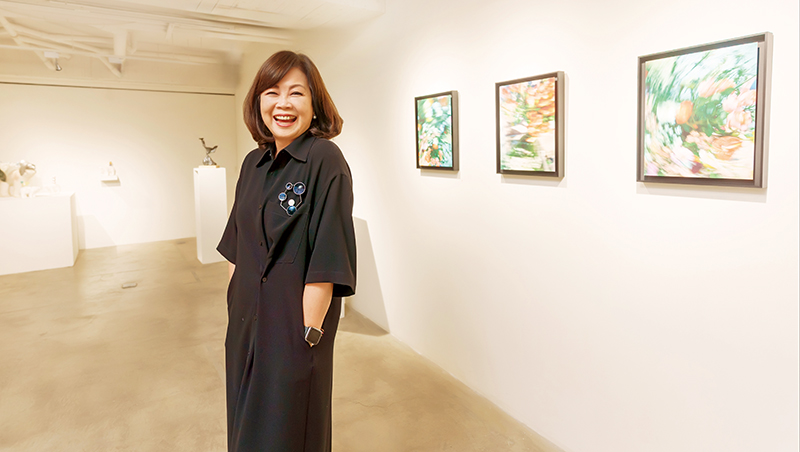
With her lustrous curly hair and hearty laugh, Chang Lily, President of Treasure Dragon Construction and GALERIE PIERRE Art Center, lives up to her appearance and sunny disposition. Nicknamed the "Architecture Heroine," she has transformed from a stay-at-home mom to the "Queen of Taichung Luxury Properties." She has also established herself in the male-dominated construction industry. Not only is she the first female president of Taiwan's architecture community, she also represents Taiwan in the World Real Estate Federation FIABCI. Next year, she will assume the role of World President, becoming the first Chinese woman to do so and making Taiwan a household name.
Profile - Chang Lily (Photo by Chen, Hong-Wen)
Current Position: Founder of Treasure Dragon Construction, MJ Construction, and GALERIE PIERRE Art Center; President of the Real Estate Association of the Republic of China
Born: 1954
Education: Business Administration, Ming Chuan University
Experience: President of the Taichung Real Estate Development Association; President of the Taiwan Association for the Development of Arts for the Disabled
A passionate art lover, she holds multiple titles: collector, creator, and art center owner. She finds stress relief and healing in art, transforming her small love into a larger one. She has long sponsored Taiwanese artists and provided a platform for artists with disabilities to realize their dreams. Art illuminates her life, and she becomes a light for others.
"My husband is the reason I first discovered art," Chang Lily said with a smile. After marrying Li Zhen-Yu, she moved to Boston, USA, with his family, where they lived for about eight years. Li Zhen-Yu, who worked for an American shoe company, would visit Taipei galleries during his free time whenever he returned to their Taichung branch on business. This was the beginning of his love for art.
Li Zhen-Yu's interest in art rubbed off on Chang Lily, and the couple made visiting exhibitions a regular weekend routine, even planning gallery trips during their vacations. After returning to Taiwan, they founded Treasure Dragon Construction in 1989, which spawned the GALERIE PIERRE Art Center the following year. They supported Taiwanese artists and brought high-quality international works to Taiwan.
Chang Lily not only co-founded the Republic of China Gallery Association in 1992 and co-organized the inaugural Taipei International Art Fair, but also collaborated with Japan's MoMA Gallery in 1999 to stage Yayoi Kusama's first solo exhibition in Taiwan, "Love Nuclear Explosion," opening up international exchange.
In its early days, the GALERIE PIERRE Art Center implemented a ten-year sponsorship program. Wang Fudong, then the artistic director and former editor-in-chief of Lion Art Monthly, recommended thirteen artists, including Zhuang Zhe, Huang Mingzhe, Qu Deyi, Yang Maolin, and Mei Dingyan, offering monthly sponsorships ranging from 10,000 to 100,000 yuan. The program also helped the artists organize exhibitions and publish catalogs, allowing them to pursue their work without worrying about their financial well-being. However, the annual cost of sponsorship alone reached over 10 million yuan, leading to repeated losses. Even now, 35 years later, GALERIE PIERRE continues to suffer losses.
Li Zhen-Yu asked Chang Lily to close GALERIE PIERRE more than once, but she refused. Besides her commitment to the artists, she also stated, "I've always considered GALERIE PIERRE the cultural heritage of Treasure Dragon Construction. With GALERIE PIERRE, Longbao's architectural style and culture are distinct from those of other construction companies."
GALERIE PIERRE curates all public artworks for Treasure Dragon's projects. Authentic works by artists are scattered throughout the community. They also produce art guides to help residents learn about the works, and even invite artists to the community for art appreciation sessions and share their creative processes. This aesthetic of everyday life subtly infuses residents with an artistic atmosphere. She recalls a "Paint My Community" drawing competition where many children sketched artists' works, demonstrating their interest in everyday life and their appreciation for life. "It turns out that children raised in this kind of environment have a different perspective than those in other communities."
As a business owner, Chang Lily has also been deeply influenced by artists. She holds the view that "process is greater than existence," meaning that there are no inherent standards for determining "completion" in art. The final presentation of a work depends entirely on the artist's inner standards and their determination of its optimal state. Artists are loyal to the creative process and are responsible for themselves. This "process" is as important as the final product. This is why Chang Lily also strictly controls the construction process of each project.

Chang Lily and her friends co-founded the Taiwan Association for the Development of Artists with Disabilities. Over the years, they have strongly supported artists with disabilities, allowing them to be seen by more people. (Source: Taiwan Association for the Development of Artists with Disabilities)
Chang Lily's support for artists also extends to those with disabilities. A former colleague's child suffered from muscular dystrophy, yet she remained committed to her passion for painting. This sparked her interest in artists with disabilities. In 2009, supporting her former colleague's vision, she and a friend co-founded the Taiwan Association for the Development of Artists with Disabilities and opened the Light Art Gallery.
"In a world of light, there is no darkness. Let artists find the light of their own lives." Through a biennial national selection competition, at least thirteen artists with disabilities are recognized each year, supported by exhibitions, media exposure, and image licensing. Over the past nine years, the competition has accumulated approximately one thousand entries, and ninety-three artists have received ongoing support. Many of these artists suffer from ALS, Down syndrome, and autism. This recognition has boosted their confidence, fostered their creative sophistication, and even enabled them to earn their own living through the sale of their artwork.
A passionate art collector, Chang Lily particularly enjoys abstract paintings and owns works by masters such as Chu Teh-Chun, Huang Ming-che, and Chuang Che. "Looking at them at different times and ages gives me different feelings," she says. Her collecting logic is not driven by market or investment, but rather by her own personal preferences. "If you treat art as a commodity, the market fluctuates, and you can't guarantee it will always be at the top end. But if you treat it as your own collection, you buy because you enjoy it; you buy for yourself."
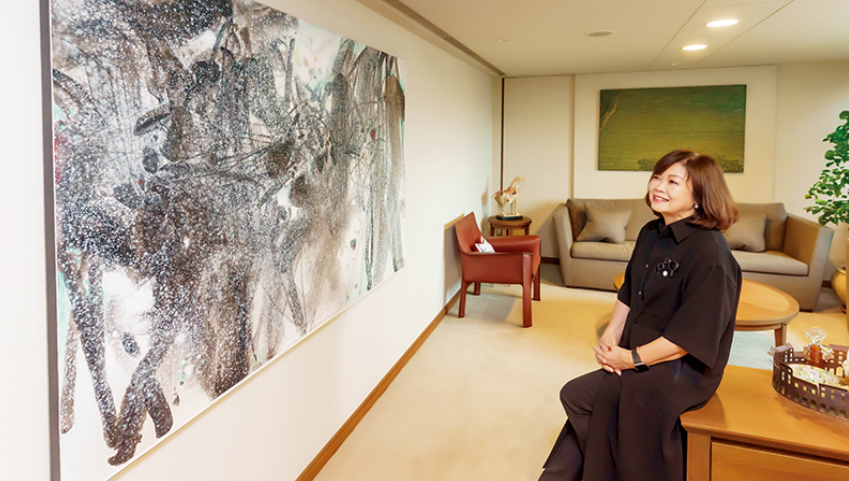
Chang Lily particularly enjoys abstract paintings, believing they offer different experiences depending on the time of viewing. She holds a collection of works by the abstract master Chu Teh-Chun. (Photo by Chen, Hong-Wen)
At a 2012 Christie's auction in Hong Kong, her Chu Teh-Chun painting, "White Forest No. 2," sold for HK$60 million (approximately NT$230 million), a record high for the artist at the time. Her relationship with Chu Teh-Chun began with admiration, and she not only visited him in France but also helped organize a solo exhibition for him at Zhenpin, acquiring numerous Chu Teh-Chun works during those exhibitions, which she now treasures.
At that time, Christie's was desperate for a major work to highlight its auction. Upon learning that Chang Lily possessed this masterpiece, she pleaded with her, but she consistently refused. Finally, she offered a sky-high price, hoping to dissuade her. Unexpectedly, on the very day of the auction, she received notification that the work had been sold under the hammer. She was immediately distraught and exclaimed, "Why did I sell it?" While she lost a beloved piece, she also secured the master's market status, marking a crucial milestone in her relationship with the artist and bringing new life to the art market at the time.
Overcoming the pain of losing a loved one through creation
After discovering art, Chang Lily also began creating, dabbling in painting, bronze sculpture, and photography. She never trained under a teacher, and her work is entirely intuitive. She shyly jokes that she can't be called an artist, but simply enjoys doodling. She always carries a blank notebook with her, scribbling whenever she has a free moment. She even uses drawings to express her opinions while reviewing official documents. When she's happy, she draws a smiley face. When she sees a budget overrun, she bluntly writes, "Do you think I'm a rich woman?" while drawing an angry face. Her colleagues compiled her smiley face drawings into a book, which has also been used as artwork for promotional materials.
Chang Lilyi's reputation for drawing has spread widely. When the Huiming School for the Blind held a concert, they commissioned her to hand-draw the tickets. Using photos of each musician, she sketched the figures. While her lines are simple, their spirit is vivid. She also created LINE stickers for the Zhang Teacher Foundation, and her work can be seen in projects.
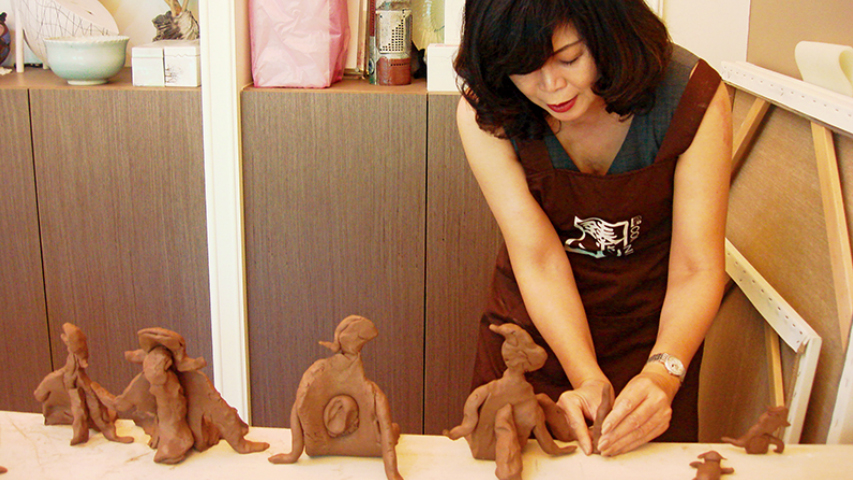
Immersed in her creative work, she never sought a teacher; her work is entirely based on instinct, effortlessly creating the outlines of figures. (Source: Courtesy of the GALERIE PIERRE Art Center)

Immersive Creation: Chang Lily's creative style is full of childlike playfulness, and her characters are endearingly charming. (Photographer: Chen, Hong-Wen)
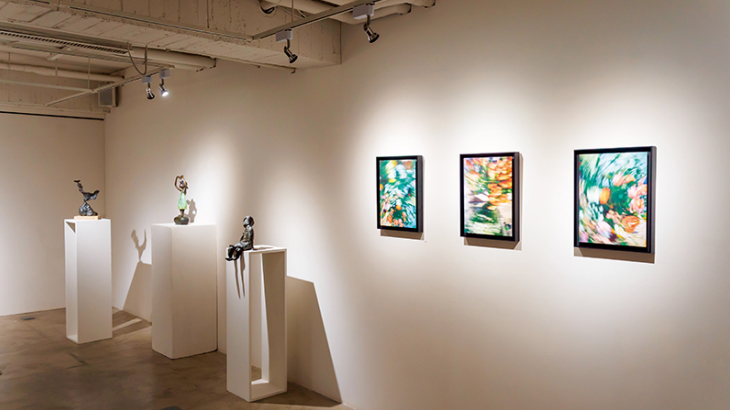
Immersed in Creativity: Chang Lily loves to create, and her bronze sculptures and photographs can be seen at the GALERIE PIERRE Art Center. (Photo by Che,n Hong-Wen)
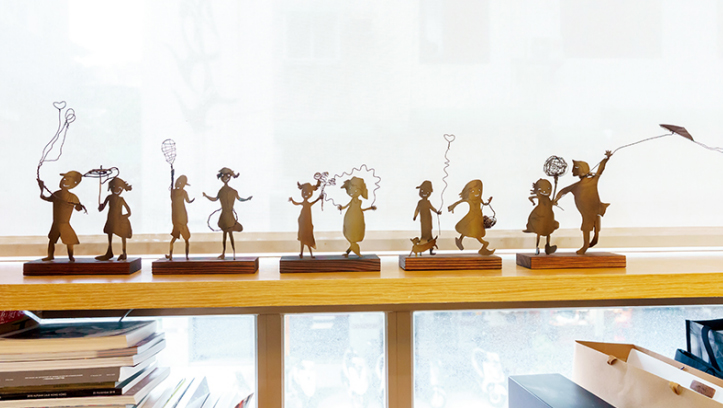
Immersed in the creative process, simple line drawings and silhouettes vividly depict the happiness and innocence of childhood. (Photographer: Chen Hong-Wen)
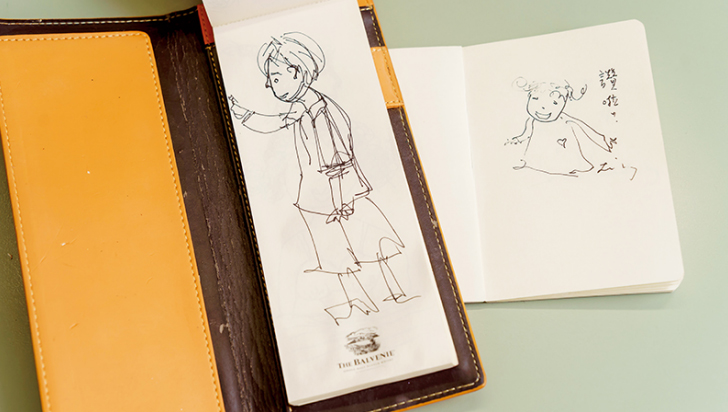
Immersed in her creative pursuits, she carries a blank notebook with her, scribbling and drawing in her free time. (Photo by Chen Hong-Wen)
She deeply enjoys the immersion she experiences when creating. Though her workdays are packed, the moment she begins to create, she can temporarily put aside her work worries and fully relax and decompress. In fact, in 2017 and 2019, she experienced the sudden deaths of her husband and mother, respectively. For a time, she struggled to come to terms with the situation. Later, she reconsidered the order of the four elements of life: birth, aging, sickness, and death, moving "birth" to the end. Death, she believed, was a welcome rebirth, allowing her to come to terms with the loss of her loved ones. Carrying a sense of mission, she believed that as a survivor, she still had to do her daily tasks, including her creative work. Art remained a part of her daily life, and in this intense concentration, she found moments of joy and peace, and the courage to continue.

 MENUCLOSE
MENUCLOSE